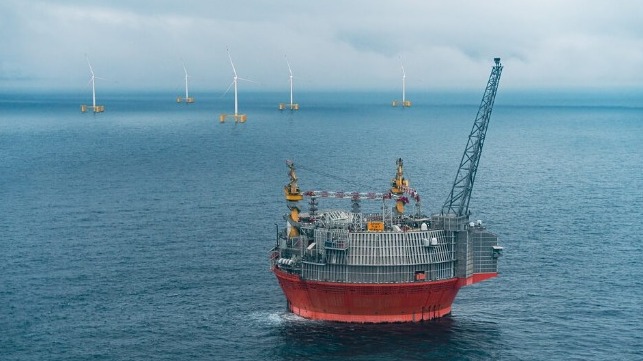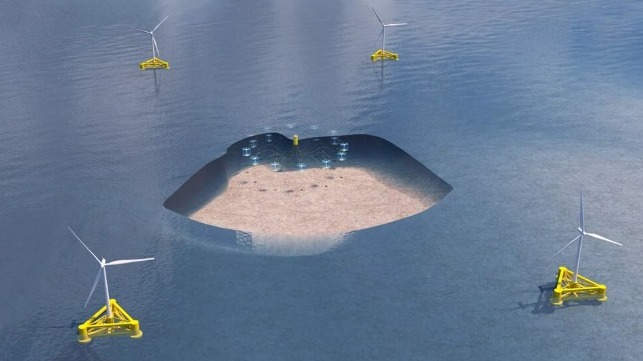Norway Gives $190M Boost to Floating Wind Farm for Eni's Goliat Platform

The Norwegian government's innovation agency will provide more than $190 million to support the construction of a floating offshore wind farm in the Barents Sea, off the coast of Hammerfest. Floating-platform technology is still nascent, but is essential for commercializing the higher power potential found further offshore, where water depths are too great for installing bottom-fixed turbines.
The future GoliatVind project came out first in a competitive grant process sponsored by technology funding agency Enova. Its backers include Japanese utility Kepco, wind developer Source Galileo and Norwegian offshore shipping company Odfjell. The project will take advantage of an existing power supply cable linking Eni's Goliat offshore oil platform back to shore.
"The government wants to make arrangements for floating offshore wind to become a new leg for the Norwegian supplier industry to stand on," said Norwegian energy minister Terje Aasland. "GoliatVind is a project that can also contribute to the development of our continental shelf while also helping to strengthen the power system on land."
GoliatVind will leverage a planned joint venture between Odfjell and Prodtex, Windsteel Technologies, which will manufacture floating wind platforms at scale. The first plant should open in 2027, in time to supply the wind farm.
"If floating offshore wind shall become a relevant source of energy in the future, we need to dramatically reduce the costs, but also increase the scale. And we need to do this without sacrificing quality," said Per Lund, CEO of Odfjell Oceanwind, in announcing the venture last month.
GoliatVind will be the second floating-wind project attached to an oil platform off Norway. Equinor, a pioneer in the space, brought its Hywind Tampen floating offshore wind project online last year. It was the first installation of its kind in the world, and it provides about one third of the power for Equinor's Snorre and Gullfaks fields.
Partnership Trials Fish Farms in a Swedish Offshore Wind Project

As demand for coastal space is rising for a variety of uses, multi-use projects in offshore areas offer a novel solution. In the latest example, Freja Offshore, a joint venture between Hexicon and Mainstream Renewable Power, has teamed up with the Norwegian company Subfarm to enable fish farming within the Mareld offshore wind farm. The site is a proposed 2.5 GW floating wind farm in the North Sea, 25 miles off the coast of Lysekil in Sweden.
Lysekil Municipality, the research institute DHI and Norway’s Blue Maritime Cluster will also participate in the new project at Mareld site. According to Freja, this project aims to showcase that generation of offshore wind power could coexist with other important coastal interests, including the fishing industry and sea-based food production.
Previous studies have shown that offshore wind farms could act as artificial reefs and marine protected areas. This helps to attract fish and other marine biodiversity, which is a great benefit for ocean conservation. Additionally, offshore wind farms limit passage of large fishing vessels, presenting a good opportunity for fish farming.
“Seafood and offshore wind power are two industries that Sweden will need more of in the future, and the least needed is to strengthen preparedness. That is why we want to find ways to combine these two pieces,” said Magnus Hallman, CEO of Freja Offshore.
For this project, the fish farms will be placed between wind turbines’ foundations and anchored in place. The fish cages will be lowered to a depth of 50-70 meters and hoisted up to the surface for checks and harvesting.
Subfarm has been working on this submersible aquaculture cage system since 2018. According to the company, the technology has been developed to cope with tough weather conditions in the North Sea and is based on methods previously used in the oil and gas industry for decades.
In the North Sea particularly, spatial conflicts between the offshore wind industry and commercial fisheries are becoming increasingly common. Finding compatible uses for shared offshore development offers an opportunity for fewer conflicts.
No comments:
Post a Comment